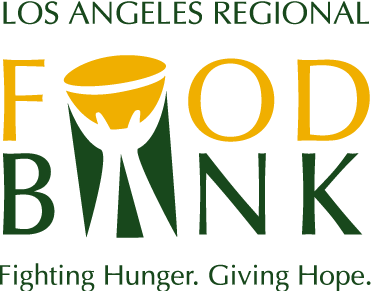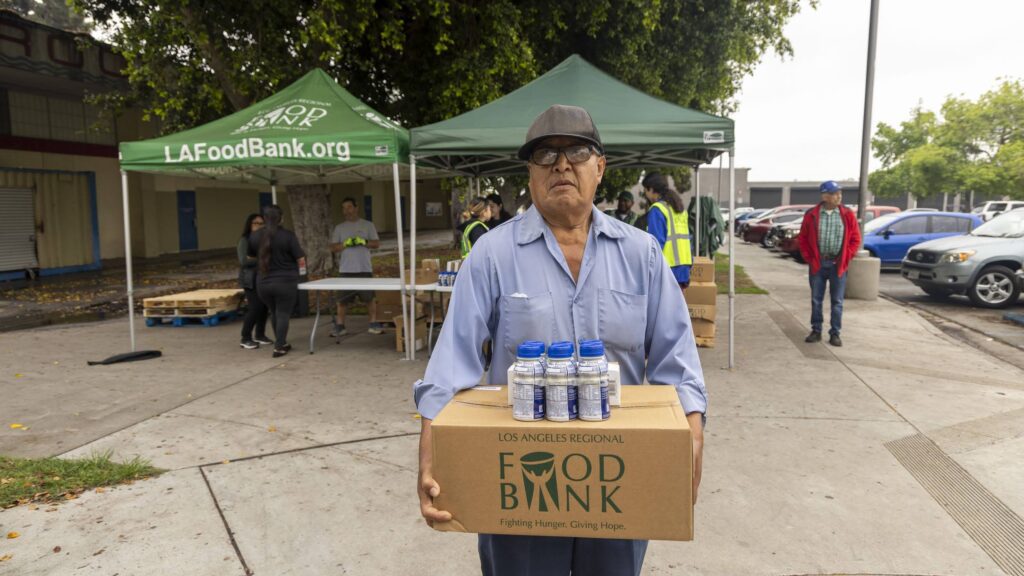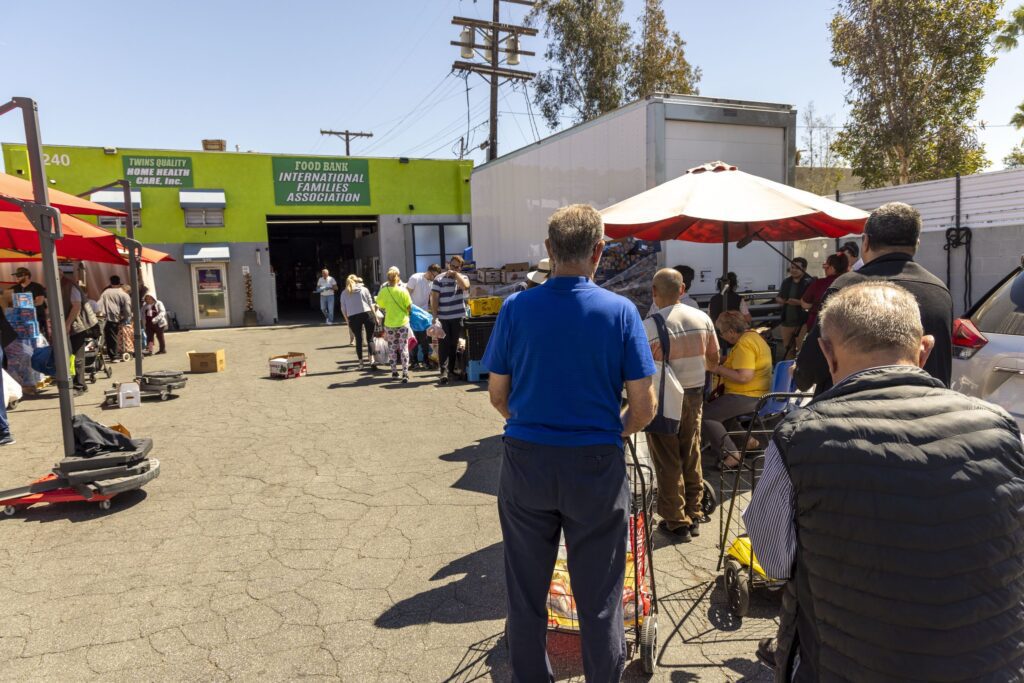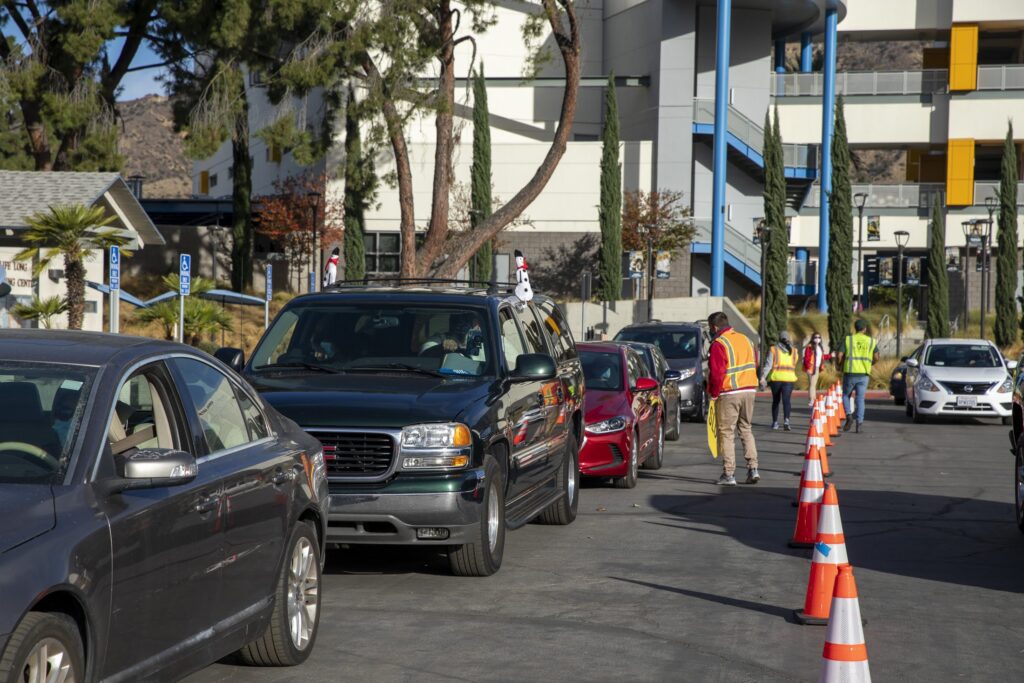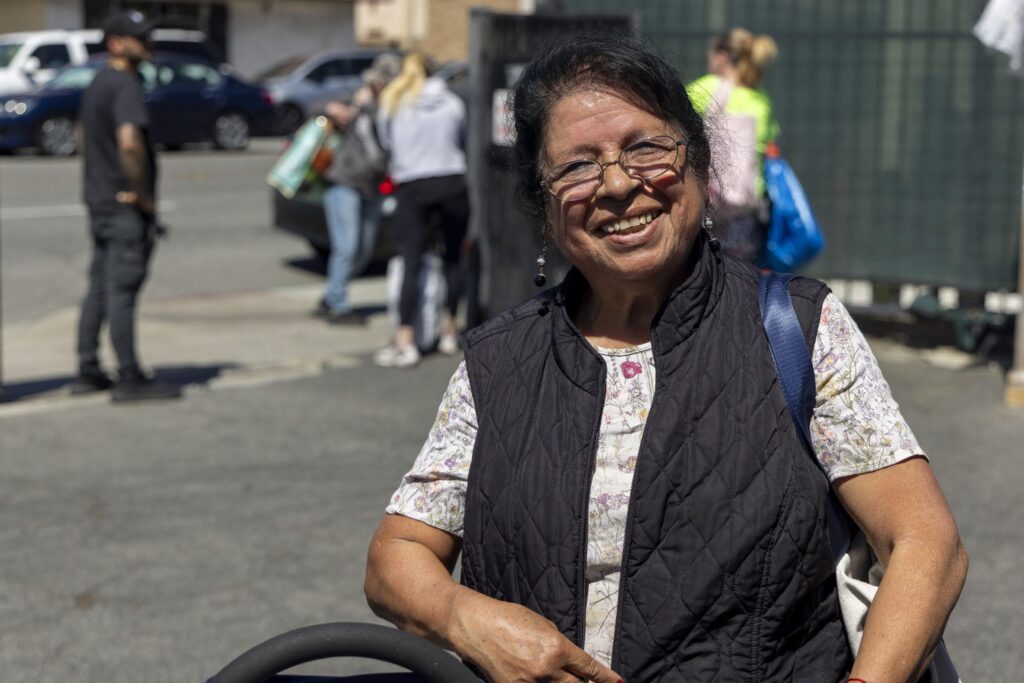In Unprecedented Times, Food Pantries are Helping Families in Local Communities
In Unprecedented Times, Food Pantries are Helping Families in Local Communities
Many Food Recipients Never Thought They’d Have to Seek Food Assistance
When the pandemic first hit Los Angeles County in March 2020, many rushed to grocery stores to buy as much food and items as they could before the stay-at-home order went into effect. With that, certain food items increased in price, while others went scarce.
Before the pandemic, the Los Angeles Regional Food Bank was seeing 300,000 clients per month at food distribution sites. But as of December, 2020, there are 900,000 County residents receiving food assistance each month, and that number is not likely to decrease as the cost of essential items continues to rise whether it be food, rent, gas, or medical bills.
An Unprecedented Need
Stella Aquino Reys is just one of the thousands of people that began seeking food assistance about a year ago. After she and her husband fell ill, covering her medical bills and copayments was cutting very much into their budgets, and the rise in the cost of food was just too much for a couple living on a fixed income. That’s when she remembered the services that the InterFaith Food Center (IFC) in Santa Fe Springs offered, one of the nearly 700 Food Bank Partner Agencies, and so she began to attend the food distributions regularly.
“Due to the hard work of all the volunteers and the staff, I have saved money on groceries, on food,” Aquino Reys said. “That has freed me some money to pay utilities and bills, and we’re able to eat good food.
“I am very grateful,” she added.
Like Aquino Reys, there are many others who wouldn’t be able to make it without the help from food distributions like the one at IFC. In 2013, one food recipient had back surgery and has not been able to return to work since. Going to food distributions is just one way they make ends meet and help cover other living costs and medical bills.
An Added Pressure on Families Budgets
Just like Aquino Reys, Eladio Hernandez, and his wife are retired and living on a fixed income. The rise in food prices is also affecting their budgets, and so, someone referred them to the IFC distribution, becoming regulars for the past few months.
At the distributions, food recipients are welcomed by staff and volunteers with love and respect, as some may feel ashamed to ask for help. Many are returning clients, while there are new clients that can no longer cover everyday costs on their own.
Regardless of whether it’s a new or returning client, the staff and volunteers at IFC are ready to load their cars with the food they need to get by with a smile, including fresh produce, dairy products, poultry or meat, baked goods, and on some occasions, fresh flowers to brighten their day.
“We’re very grateful for the food we receive here,” said Mr. Hernandez.
“With the food we receive here, we can use that money to buy other essentials,” Mrs. Hernandez said.
A Community That is Like Family
While there are clients that strictly return for the food distribution, many have found a second or extended family with the IFC staff and volunteers. Ahead of the 8 AM food distribution start time, dozens of cars begin to line up, and among them is one senior living on a fixed income.
He learned about the food distribution at IFC after his wife passed away. Understandably, he was not in the right mindset and was going through a tough time. The staff and volunteers at IFC could have chosen to simply put a few boxes of food in his car, sent him on his way, and would have completed their duty. However, the IFC staff brought him out of his car, sat him and down and asked him about what more they could do to help. Ever since, he has come back, not just for food, but to chat with people he now considers more than friends, but family.
“The kindness, which is rare in this day and age, we’d have to agree, but it’s here,” he said.
Thanks to the generosity from the community, the Food Bank is highly efficient, and 98.6% of revenues go directly to our programs providing food for children, hardworking families, struggling seniors, and more. If you’re in a position to do so, please donate.

